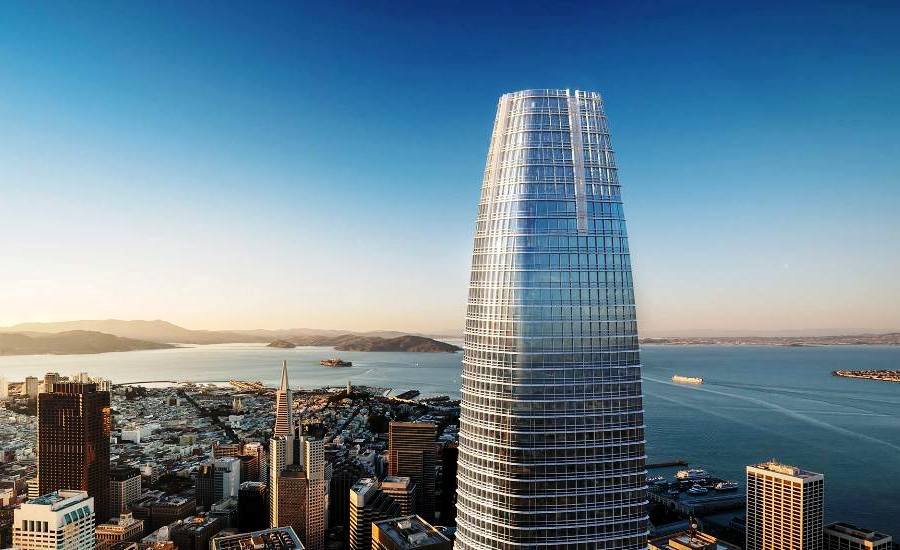San Francisco's newest and tallest skyscraper announced recently that it will feature the largest on-site water recycling system in a commercial high-rise building in the United States. In the new 1,070-ft-tall Salesforce Tower, wastewater from sources such as rooftop rainwater collection, cooling towers, showers, sinks, toilets and urinals will be collected, treated in a centralized treatment center and recirculated through a separate pipe system to serve non-potable uses in the building.
The system, the first of its kind for the city, will reduce drinking water demand by saving up to 30,000 gallons of fresh water a day and 7.8 million gallons a year, equivalent to the annual water consumption of 16,000 San Francisco residents, say project officials.
The blackwater system will be treating water in the parking deck, below-grade on levels P2 and P3. Once water is treated, it will be stored on level P1 before being distributed for non-potable uses throughout the building.
In collaboration with the city and building owner Boston Properties, the blackwater system represents the first partnership in the U.S. between a city government, building owner and a tenant to support blackwater reuse in a commercial high-rise building. The system, being installed by Australian company Aquacell, will provide water recycling for all tenants in Salesforce Tower and can offer a blueprint for other companies interested in sustainable water strategies.
"I would recommend to any company looking to install any sustainability feature in a new or existing building to have candid discussions with their local government officials and partners about the need for such technologies," says Patrick Flynn, senior director of sustainability for Salesforce, a company specializing in cloud computing and customer relationship management (CRM). "Incorporate everyone from the early stages of planning to ensure alignment throughout the process."
Flynn says construction on the project is anticipated to take six months and should begin this spring. Following construction, an estimated six months of commissioning will take place during which San Francisco city and county agencies will perform water quality testing and balancing. Upon completion, staff will be issued a license for ongoing operation, he says.
Though the cost of the project is not being disclosed, Flynn says Salesforce will "see the payoff of the system down the line as it will reduce the building’s water footprint by 76% - equivalent to the yearly water consumption of 16,000 local residents."
The system was built in isolation of the existing plumbing system and is designed to last for the duration of the building’s lifetime with routine replacement of membranes, pumps and other miscellaneous items. Since it is separate, it can be shut off or disconnected from the building plumbing without water service interruption for repairs or maintenance.
Flynn told me the project's most interesting construction challenge is probably that it is a retrofit to an existing, newly constructed building with a very tight footprint and site in downtown San Francisco.
"The building already has dual plumbing to its plumbing fixtures on all 62 floors and an existing rain catchment system," he said. "Aquacell’s Blackwater System integrates with the existing water reuse technology and will provide an estimated 30,000 gallons per day of treated reusable water for non-potable uses throughout the building. It is also unusual for an urban commercial building to recycle water for toilets, cooling towers and irrigation – Aquacell’s system covers all the bases."


Post a comment to this article
Report Abusive Comment